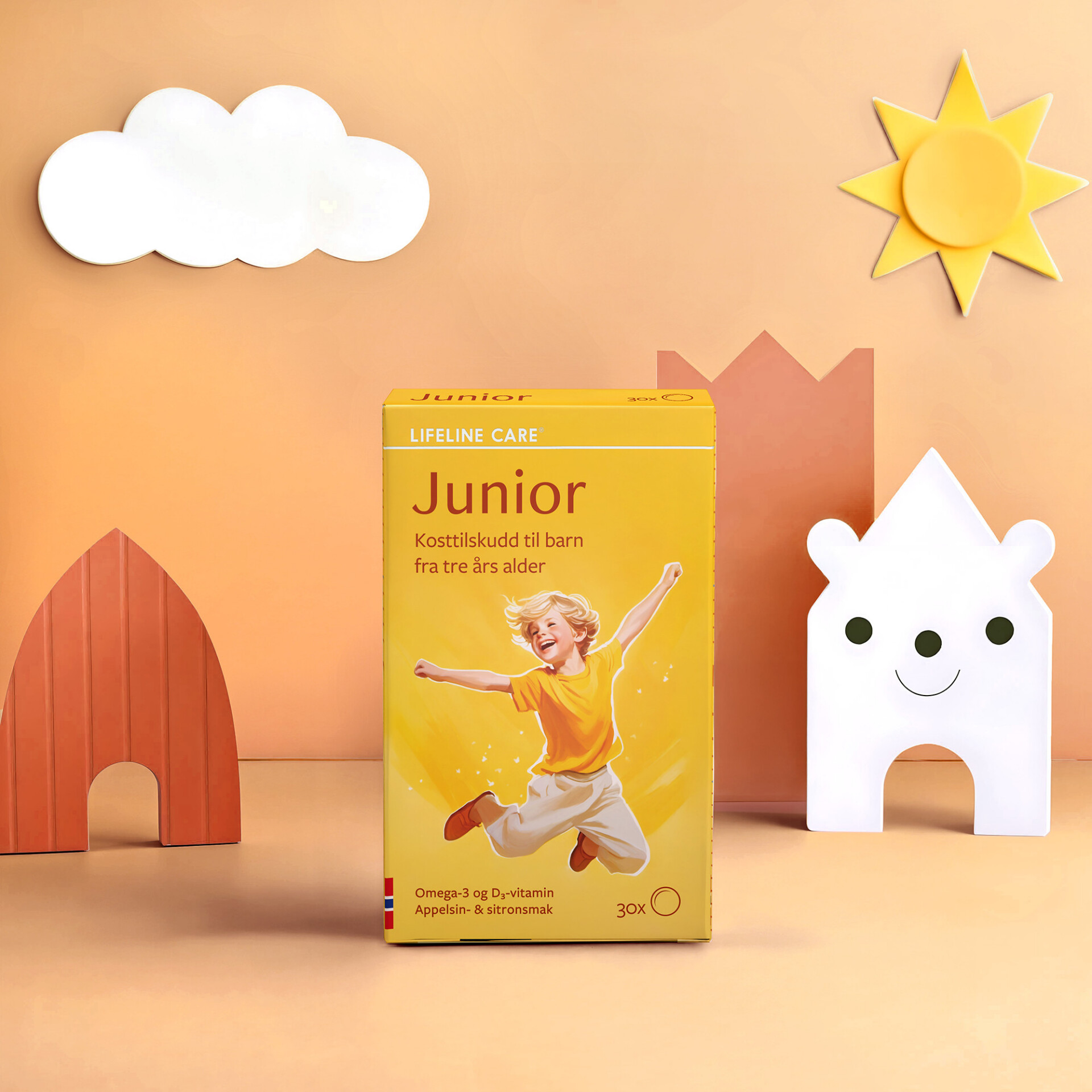Foundations for Growth and Development
From early childhood through adolescence and into adulthood, our nutritional needs gradually change. What remains constant, however, is the importance of a balanced and varied diet. Nutrition is not only about providing energy, it is about supplying a diverse combination of nutrients that together form the foundation for normal growth and development. Each nutrient can be seen as a building block in the intricate structure of the human body, contributing to overall nutritional balance.
Lifeline Care Junior has been developed with this perspective in mind. Its formulation combines three key omega-3 fatty acids, DHA, EPA, and DPA, with vitamin D, creating a product designed to offer a broad and thoughtful nutrient profile. Each nutrient plays an important role in the body’s functions and contributes to maintaining proper nutritional balance and overall well-being.

DHA (Docosahexaenoic Acid)
DHA is one of the most well-known omega-3 fatty acids. Naturally present in the brain and eyes, it is a structural component of cell membranes and contributes to the natural variety of omega-3s found in the body. In Lifeline Care Junior, DHA is included at a high level, forming a substantial part of the product’s overall omega-3 profile.
During the growth years, DHA is often highlighted in nutritional science due to its prominence in marine-based foods and its widespread recognition as a primary omega-3 fatty acid. By including DHA in a carefully measured amount, the product ensures that children and adolescents receive a broad and representative intake of omega-3s. Its presence also illustrates the thoughtful approach to nutrient composition, emphasizing completeness and balance within the formula.
EPA (Eicosapentaenoic Acid)
EPA is another key omega-3 fatty acid commonly found in marine sources. While DHA often receives the most attention, EPA plays an important complementary role. It enriches the overall omega-3 profile of the product and helps provide a more diverse nutrient composition.
In Lifeline Care Junior, EPA is included alongside DHA to ensure that the omega-3 content reflects the natural variety found in a healthy diet. It is recognized in nutritional science for its frequent presence in fish oils and other marine sources. By including EPA, the product demonstrates a commitment to offering a balanced formulation that represents multiple members of the omega-3 family, rather than focusing on a single nutrient alone.
DPA (Docosapentaenoic Acid)
DPA is less well-known than DHA and EPA, but it completes the spectrum of omega-3 fatty acids. It is naturally related to both DHA and EPA, and including it in the formulation contributes to the diversity and balance of the product.
Though DPA is not as widely discussed, it has been the subject of increasing research interest in nutritional studies. Its presence in Lifeline Care Junior reflects a desire to provide a full range of omega-3s, giving a broader representation of these nutrients as they occur naturally in the diet. By including DPA, the product emphasizes a complete omega-3 profile and a thoughtful approach to nutrient diversity.
Vitamin D
In addition to omega-3 fatty acids, Lifeline Care Junior contains vitamin D. This vitamin is frequently emphasized in dietary guidelines and is naturally present in some foods. In the formulation, vitamin D complements the omega-3 content, adding another layer of nutrients that contribute to a balanced composition. Its inclusion reflects the attention given to combining multiple nutrients in a coherent and carefully considered product.
A Thoughtfully Composed Formula
By bringing together DHA, EPA, DPA, and vitamin D, Lifeline Care Junior provides a carefully composed supplement designed for children and adolescents. The product does not rely on a single nutrient; instead, it offers a broad and varied composition that mirrors the diversity found in a balanced diet.
The formulation has been developed to provide a practical way of including multiple omega-3 fatty acids and vitamin D in daily nutrition. Its design reflects an understanding of the natural diversity of nutrients and a commitment to providing a balanced, thoughtful approach to supplementation.
Lifeline Care Junior is more than a combination of ingredients; it represents a carefully considered selection of omega-3 fatty acids and vitamin D, composed to offer a rich and varied nutrient profile. Each component adds its own element to the overall composition, emphasizing balance, variety, and a mindful approach to dietary supplementation.







